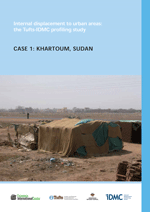Sudan’s North-South civil war and the conflict in Darfur generated one of the largest internally displaced populations in the world. A large proportion of these IDPs is found in and around the capital, Khartoum. This study took place two years after the signing of the Comprehensive Peace Agreement (CPA). While the CPA raised hopes for the return of IDPs, continuing insecurity, lack of services in areas of return and doubts about the sustainability of the CPA, have slowed the pace of return.
We conducted the survey in selected areas of Greater Khartoum, excluding the IDP camps. The overall goals of the survey were to provide the Government of Sudan and the humanitarian community with population estimates, and updated information on comparative living situations of IDPs and non-IDPs living outside the camps. The survey was conducted from 4-13 March, 2007, and included 16 administrative units in four localities of Greater Khartoum: Um Badda (Omdurman), Jabal Awlia amd Khartoum Locality (Khartoum) and Sharg Al Niel (Khartoum North). We used data from the updated census conducted by the National Bureau of Statistics in November 2003. After stratifying the city into areas of low, medium and high IDP density, we used a population density based sampling technique (PPS) to select primary sampling units (administrative areas), and then interval sampling to select households. The final sample of 980 households included 6764 people of whom 2846 were under 18 years of age. We conducted secondary analysis of our data to determine who were IDPs, and then compared this sub-group with non-IDPs.
This report is part of a study that took place from 2006-2008 in three urban locations. Surveys were conducted in each city in collaboration with Internal Displacement Monitoring Centre, Geneva.
- The Abidjan, Côte d’Ivoire case study is available here.
- The Santa Marta, Colombia case study is available here.
- Information on the methodology is here.
- Download the Methods Annex.







